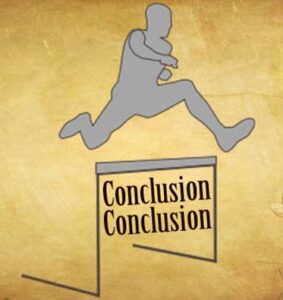 I held a garage sale last weekend. All sorts of people wandered through.
I held a garage sale last weekend. All sorts of people wandered through.
After observing how they looked, spoke and handled objects, I started forming opinions and making judgments:
- The man who offered me $2 for a $5 electric hedge trimmer
- The woman who complimented my taste in jewelry and bought some
- The man who broke my old wooden biscuit box, explained this wasn’t his fault and didn’t offer to pay
This reminded me of our brain’s desire to “fill in the blanks”– occasionally on blankety-blank people – and why this is so hard to control.
Why We Can’t Stop Stereotyping
As much as we think we look at everyone (or everything) individually, our brains aren’t set up that way. We don’t have enough mental bandwidth to handle this. So we take shortcuts, like categorizing.
If you read off a list of 20 grocery store items for someone to remember, that person will recall a portion of these. But if you group them into categories – dairy products, fruit, vegetables – the person will remember a much higher number. (This alone is helpful for your next trip to the store!)
Your brain is always searching for patterns. In Thinking Fast and Slow, Daniel Kahneman discusses how our brains prefer to use shortcuts to process information and come to conclusions quickly (fast) rather than taking time to analyze something in-depth (slow). (OK: we all know a few outliers here.)
Categorization is one of those shortcuts.
Short Cuts Both Ways
Most often this is very helpful. You don’t waste time at the grocery looking at each individual banana to determine what kind of fruit it is. You see “yellow, crescent-shaped fruit in a bunch” and know what it is.
The rub is that putting an item or a person into a category automatically affects our perceptions – in ways we’re not aware of.
In one experiment, subjects were asked to rate the length of a series of lines: the biggest was 5% longer than the middle, which was 5% longer than the smallest. When each line was presented without reference to others, people did a good job of determining its size.
However, when lines of different lengths were grouped together, things changed.
People saw the lines in each group as being more like the rest of the lines in that group, and more different from the lines in other groups. And they thought the difference between the two groups was greater than it was.
The Devil Is …
Leonard Mlodinow, in Subliminal: How Your Unconscious Mind Rules Your Behavior, explains it this way:
… when we categorize, we polarize. Things that for one arbitrary reason or another are identified as belonging to the same category seem more similar to each other than they really are, while those in different categories seem more different than they really are. The unconscious mind transforms fuzzy differences and subtle nuances into clear cut distinctions. Its goal is to erase irrelevant detail while maintaining information on what is important.
But sometimes those details are relevant!
The In Group
In another experiment, in an upscale grocery store, patrons saw a dirty, raggedly dressed man shoplift an item. Another set of patrons saw a well-dressed, clean shaven man do the same.
The bystanders were more likely to report the first man to the store management than the second. This was due in part to the man not looking like them: belonging to a different group. Those who turned him in also did so with more enthusiasm, including “that son of a bitch just stuffed something down his coat!”
Be aware that placing people into a group that doesn’t include you automatically accentuates the differences you feel. Just as classifying someone as like you means you’ll focus on the similarities. And in both cases, you’ll be wrong. Your mind has jumped to conclusions that closer review will show weren’t warranted.
Stereotyping is built into your brain. Watch that it isn’t constructing needless barriers or unsafe bridges.
If you want to know more about how your brain is affecting your leadership and your teams, let’s talk.
